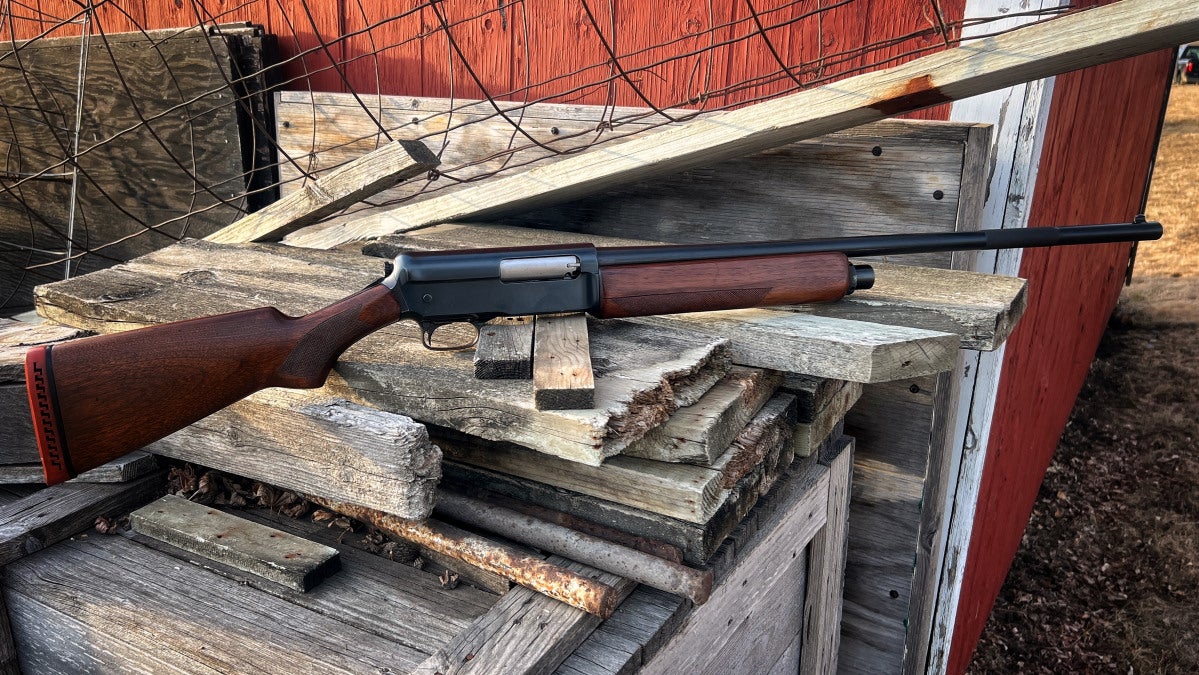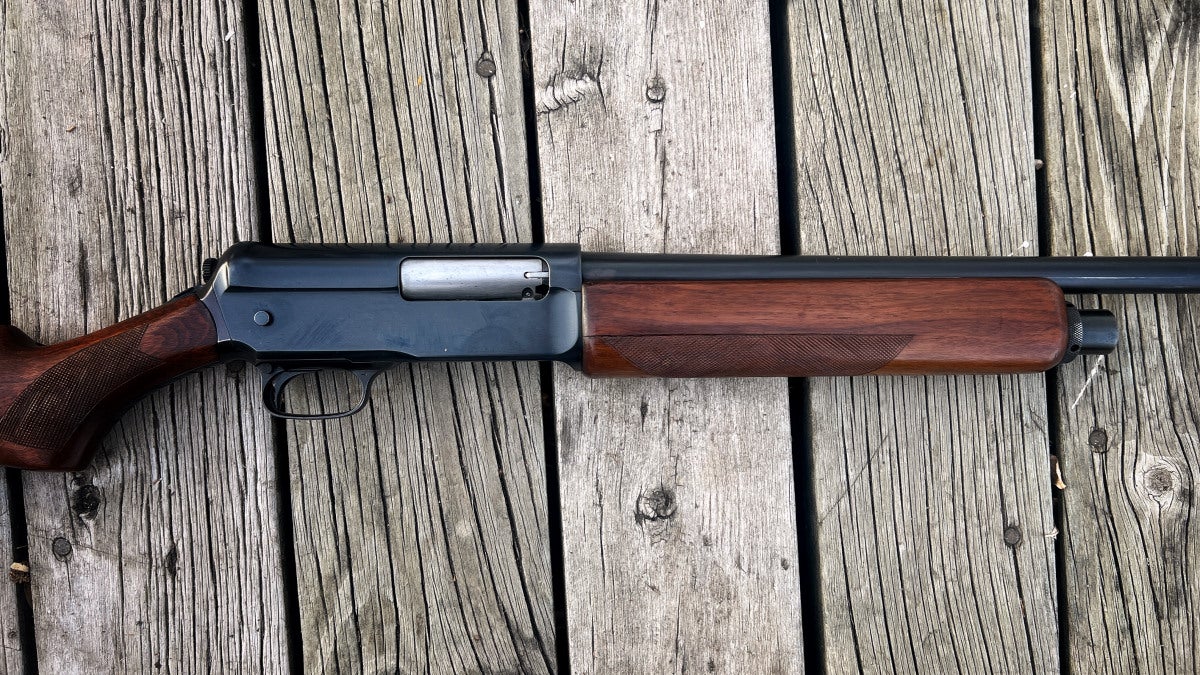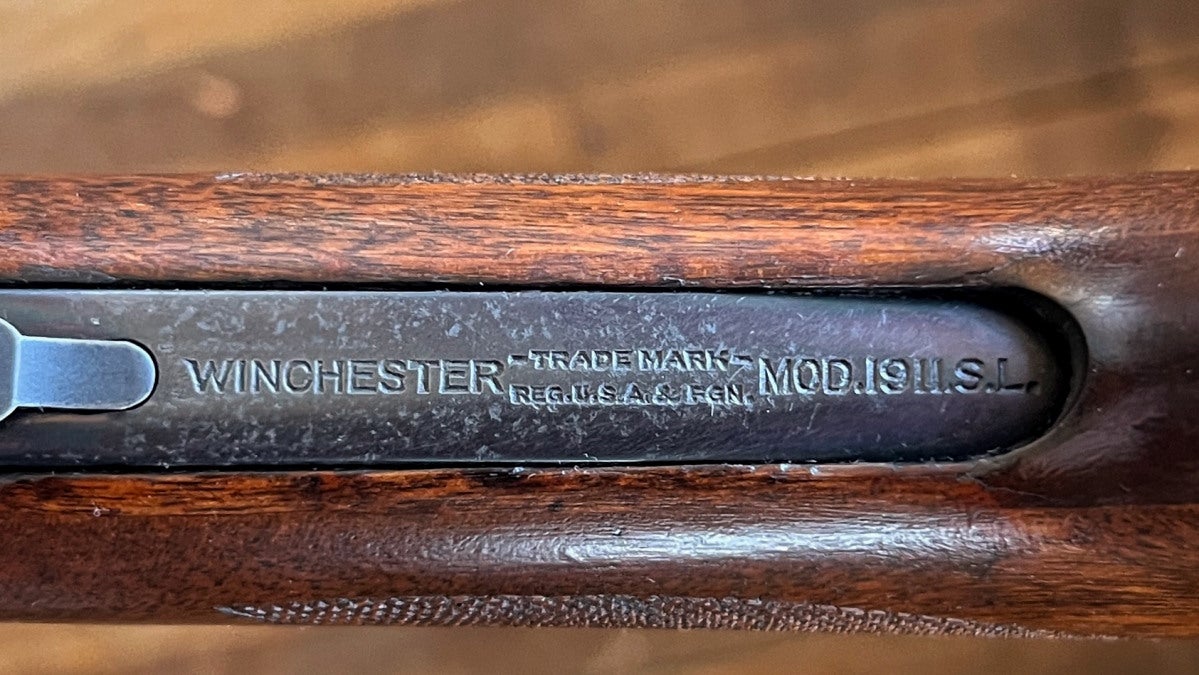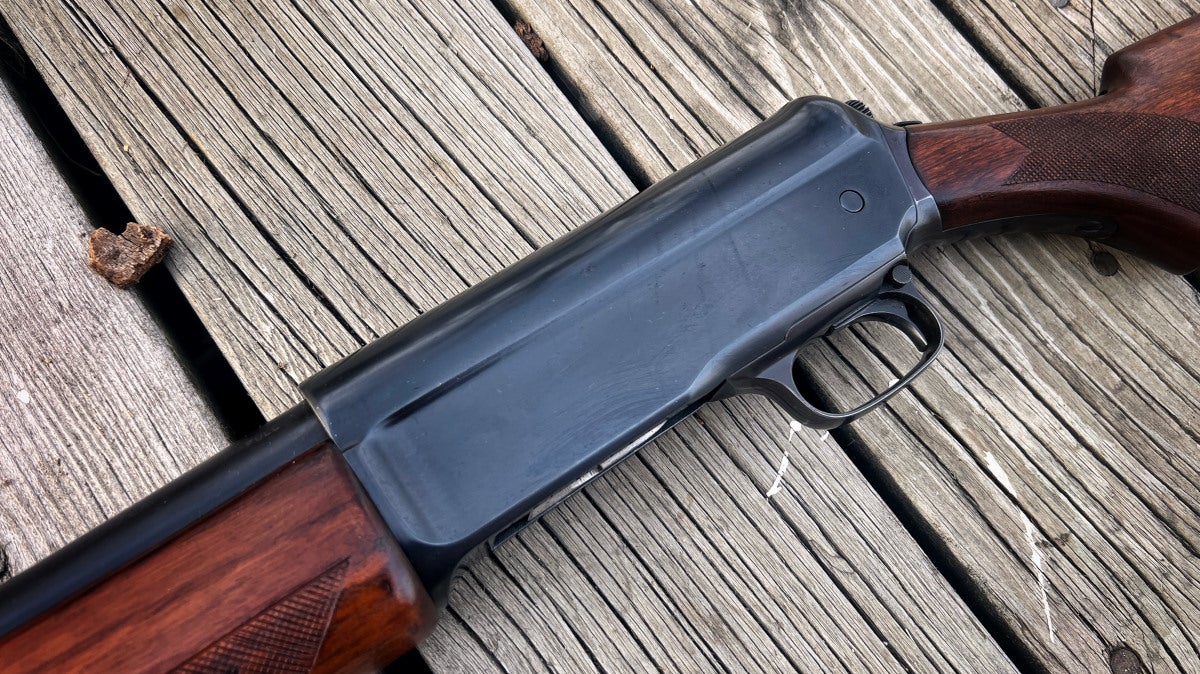Curious Relics #108: Dating A Widowmaker – Winchester 1911 SL Part III
Sam.S 04.16.25

Welcome, if you are a newcomer to this fun bi-weekly segment of AllOutdoor.com! We are back to our ongoing exploration of the Winchester 1911 SL! In our previous installments, we dove into the fascinating history behind this unique shotgun and examined the various grades Winchester offered during its production run. Today, we’re focusing on one of the most challenging aspects of collecting these guns: accurately dating when your particular Model 1911 SL was manufactured.
Curious Relics Coverage on AllOutdoor:
- Curious Relics #102: The Daisy Red Ryder BB Gun
- Curious Relics #103: The Daisy Red Ryder BB Gun Part II
- Curious Relics #104: The Daisy Red Ryder BB Gun Part III
- Curious Relics #105: Daisy Red Ryder BB Gun Part IV
Welcome to our recurring series of “Curious Relics.” Here, we want to share all of our experiences, knowledge, misadventures, and passion for older firearms that one might categorize as a Curio & Relic – any firearm that is at least 50 years old according to the ATF. Hopefully along the way you can garner a greater appreciation for older firearms like we do, and simultaneously you can teach us things as well through sharing your own expertise and thoughts in the Comments. Understanding the firearms of old, their importance, and their development which lead to many of the arms we now cherish today is incredibly fascinating and we hope you enjoy what we have to share, too!
Dating: Winchester 1911 SL
If you’ve managed to get your hands on one of these unusual shotguns, you might be wondering exactly when it rolled out of the Winchester factory. Dating a Winchester Model 1911 SL has historically been a bit challenging, but I’ve managed to track down some better information to help you out.
Factory Records vs. Published Data
There’s been some confusion in Winchester collecting circles about the company records for the Model 1911 SL. Many collectors have relied on serial number data published by George Madis, a firearms historian who created serial number tables for Winchester firearms. However, I’ve found documentation from Winchester Repeating Arms’ customer service that provides what appears to be more accurate information.
According to Winchester’s factory records, here are the serial number ranges assigned to guns at the end of each calendar year:
- 1911 – 1 TO 3819
- 1912 – 27659
- 1913 – 36677
- 1914 – 40105
- 1915 – 43284
- 1916 – 45391
- 1917 – 49893
- 1918 – 52895
- 1919 – 57337
- 1920 – 60719
- 1921 – 64109
- 1922 – 69132
- 1923 – 73186
- 1924 – 76199
- 1925 – 78611
For comparison, here’s what Madis published for Model 1911 SL serial numbers at the start of each year, which is commonly cited on collector forums and websites:
- 1911 – 1
- 1912 – 3,820
- 1913 – 27,222
- 1914 – 51,502
- 1915 – 60,521
- 1916 – 69,236
- 1917 – 67,128 (note the decrease)
- 1918 – 69,238
- 1919 – 73,739
- 1920 – 76,742
- 1921 – 81,125
- 1922 – 84,576
- 1923 – 89,600
- 1924 – 93,655
- 1925 – 96,869
- 1926 – 99,282
- 1927 – 100,255
- 1928 – 103,213
As you can see, there are significant discrepancies between these two sources, particularly in the later years. The factory documents confirm that “The Model 1911 was discontinued in 1925. However, guns were produced for three years after that date to clean up production and excess parts. When this practice ceased, there were approximately 82774 guns produced.”
This explains some of the confusion – while regular production ended in 1925, Winchester continued assembling guns from existing parts through about 1928, bringing the total to around 82,774 units. Madis claimed that many serial numbers were skipped after 84,774 in 1921, which doesn’t align with factory records.
Using the factory information, my own gun with serial number 7265xx would theoretically have been manufactured somewhere between 1923 and 1924. However, this creates an interesting contradiction – according to the information we covered in Part 2, the Fancy Finished variation (which is what I own) was only produced from 1911 to 1918.
This presents us with a few possibilities:
- George Madis’ information is in fact the more accurate one
- The information about when the Fancy Finished variant ended production might be incorrect (taken from Winchester Shotguns by Dennis Adler)
- My gun might have been assembled from parts after regular production of the Fancy Finished variant ended
- The factory serial number records might have some inaccuracies
- My gun might not be a factory-original Fancy Finished model, but rather a Plain model that was upgraded later
This kind of detective work is part of what makes collecting these old firearms so interesting. Without factory records that specify which variation corresponds to which serial number, we’re left with some mystery.
A Word About Winchester Records
It’s worth noting that Winchester’s records have had a complicated history. According to documentation from Winchester Repeating Arms, there are many “legends” about why the historic serial number records aren’t always complete or verifiable. These range from factory fires to records being lost during office cleanings or misplaced during ownership transitions.
The company itself acknowledges that “there is no original, single, totally accurate database of serial numbers from 1866 forward.” This means that even these factory records should be treated as the best available information rather than absolute gospel truth.
Resources for Dating
If you’re trying to date your Model 1911 SL, you do have some options:
- The serial number ranges provided above from Winchester’s factory records are probably your best starting point.
- Oldguns.net offers a serial number lookup service that can give you an estimated production year, though their data may be based on the Madis tables rather than factory records.
- Cody Firearms Museum offers a factory letter service for Winchester firearms. They house many Winchester factory records and can provide certificates with production information. However, given the known issues with firearm records, you might not get as much information as you would for other Winchester models. I’ve used their service for a Winchester 94 and it was excellent, but your mileage may vary with the Model 1911 SL.
- Winchester Repeating Arms Historian at the Morgan, Utah office (801-333-3288) might be able to provide more detailed information in exceptional cases.
- Physical characteristics can sometimes help narrow down the production timeframe. Early models (1911-1912) often had slightly different features than later production guns, such as flatter sides on the receiver. The variation date ranges we covered in Part 2 can also serve as helpful clues – if you have a Fancy Finished model (produced 1911-1918), a Trap Grade (1913-1926), or a Pigeon Grade (1912-1926), these date ranges can narrow down the possible production window regardless of what the serial number might suggest. For example, a Fancy Finished model with a high serial number that would otherwise suggest a 1923-1924 production date is more likely from the 1917-1918 period when that variation was still being made.
Bottom line: dating a Winchester Model 1911 SL involves some educated guesswork. The serial number tables give you a fairly reliable range, but there’s always some margin for error when dealing with century-old firearms and incomplete records.
End of Part 3: The Dating Game
As you can see, pinning down exactly when your Winchester Model 1911 SL was made is a bit like trying to hit a moving target. Between conflicting serial number records, limited factory documentation, and variations that only existed during certain timeframes, it requires a bit of detective work and some educated guesses. What makes this sleuthing so rewarding is that each of these guns has its own story to tell. Mine apparently exists in a strange limbo – the serial number suggests one date while the variation suggests another. That’s part of the charm of collecting these old firearms; sometimes, the mystery is as interesting as the solution.
In our next installment, we’ll finally get into the specifications of the Model 1911 SL, look at the available parts and accessories for anyone maintaining or restoring these unique shotguns, and (the part I’m most excited about) take mine out to the range to see how this century-old “Widowmaker” actually performs with modern ammunition. Will it live up to its fearsome reputation or prove to be a smooth-shooting classic that was simply misunderstood? Stay tuned to find out as we wrap up our exploration of one of Winchester’s most curious creations.
In closing, I hope our Curious Relics segment informed as well as entertained. This all was written in hopes of continued firearm appreciation and preservation. We did not just realize how guns were supposed to look and function. It was a long and tedious process that has shaped the world we live in. So, I put it to you! Is there a firearm out there that you feel does not get much notoriety? What should our next Curious Relics topic cover? As always, let us know all of your thoughts in the Comments below! We always appreciate your feedback.



